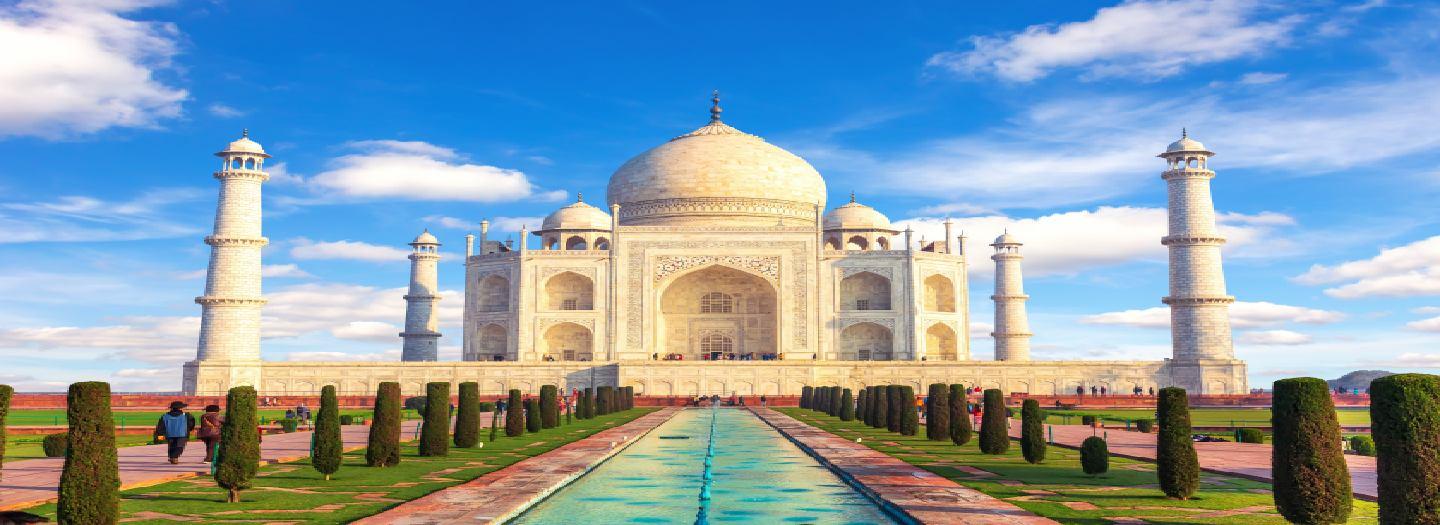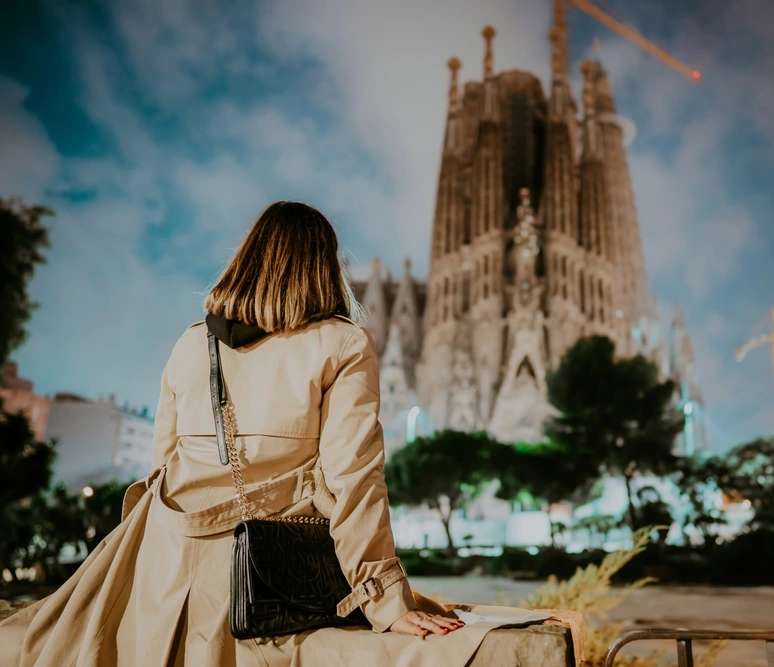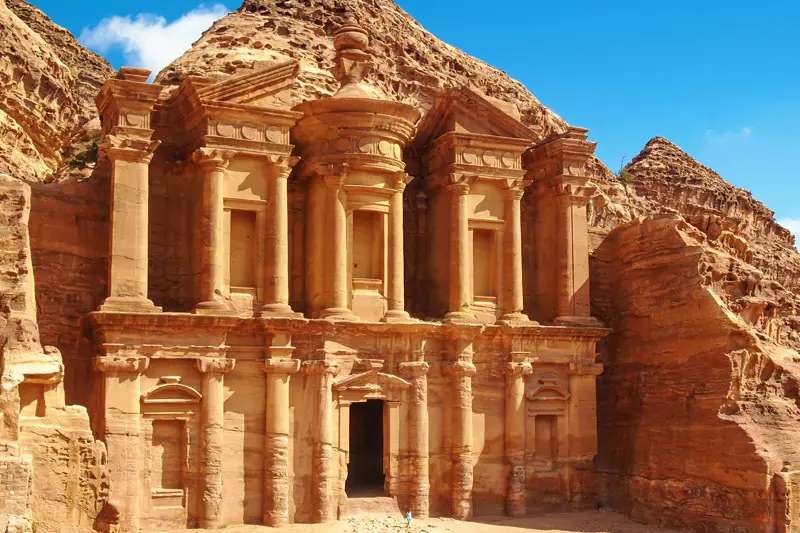
India Vacations: The Amazing Taj Mahal
Visiting the Taj Mahal: The Taj Mahal, an enormous white marble mausoleum built in Agra between 1631 and 1648 by Mughal Emperor Shah Jahan in honor of his favorite wife, is one of the most widely appreciated masterpieces in the world's heritage.
"The Crown of the Palace" is in English and sometimes it's spelled as "Tadj Mahall". The Taj Mahal is considered one of the most beautiful buildings in the whole world. Some people see it as one of the seven world wonders.
Taj Mahal is an enormous, beautiful mausoleum made of white marble; it was built in "India" in the heart of Agra city between (1631 and 1648) and it was built by the Mughal emperor "Shah Jahan" in memory of his beloved, favorite wife.
The mausoleum of the Taj Mahal is an outstanding example of Islamic art in India and one of the world's most popular masterpieces that you must visit.
What City is the Taj Mahal in?
Regarding the Location of the beautiful mausoleum; the Taj Mahal is located in Agra, western Uttar Pradesh state, northern India (on the right bank of the Yamuna River in a vast, The Mughal Garden, spreads over a massive 17 hectares of land, in the Agra District of Uttar Pradesh, situated 3 Kilometers from the City Center and the city's main train station, specifically 176 Kilometres from New Delhi, the capital.
It takes a few minutes to get there by the roads, especially since there are some big ways and other fast lanes for that. On the other hand, to reach Agra while arriving from abroad, it is necessary to pass through New Delhi, which is just over 200 km away.
To get from one city to another, you have to take one of the two highways will take you around 3 hours or 3 hours and a half. You can get to the city of Agra either by bus, train, or air service which is really limited and has a wide range of tourist amenities. Access to the Taj Mahal complex is on foot.
The Taj Mahal History:
The mausoleum of the Taj Mahal was founded by "Shah Jahan" “the King of the World,” who took control of the Mughal Empire throne in 1628. Shah Jahan was deeply in love with his favorite wife "Mumtaz Mahal" the Chosen Lady of the Palace.
The Pots of AgraAgras Mughal court had many claims about her beauty, with statements such as "her beauty was such that the moon hid its face in shame before her". Muta Mahal met her untimely death as she was giving birth to her fifteenth child on the Ominous date of 17th of June, 1631. In honour and to solidify her name in the books of history, Shan Jahan built a Mausoleum in honour of his beloved wife.
The Whole house and the gardens of the city were completed 5 years later, with the mausoleum finalized in 1648. Shah Jahan's love was reflected in the building as he put his passion and wealth in The Taj Mahal which is considered to be the greatest architectural achievement in the whole range of Indo-Islamic architecture. Its recognized architectural beauty has a rhythmic combination of solids and voids, concave and convex, and light shadow; such as arches and domes further increases the aesthetic aspect.
It is said that 20,000 stone carvers, masons, and artists from across India and as far as Turkey and Iraq were employed under a team of architects to build the Taj Mahal in the lush gardens on the banks of Agra’s Jamuna River. The monumental task was completed between 1631 and 1648.
As for Sunni Muslim burials, simple burial plots under the open sky are usually favoured, however many domed mausolea were built for Mughals ( among other Central Asian rulers) were built before Shah Jahan's reign, so regarding the Taj, it's not the only or the first beautiful mausoleum to be built at that time. The Taj is, however, exceptional for its monumental scale, stunning gardens, lavish ornamentation, and its overt use of white marble.
Unveiling the Mystery: The Architect Behind the Majestic Taj Mahal
The Mausoleum, made out of white marble is surrounded by two, exactly identical buildings of red sandstone on each side, one functioning as a Masjed for prayer with the purpose of the other building is still unclear to this very day, with some suggesting it was built for Architectural balance. Topping the marble construct is a Bulbous dome and 4 minarets of equal height.
While minarets in Islamic architecture are usually associated with mosques—for use by the muezzin who leads the call to prayer—here, they are not functional, but ornamental, once again underscoring the Mughal focus on structural balance and harmony.
The interior floor plan of the Taj exhibits the hasht bishisht (eight levels) principle, alluding to the eight levels of paradise. Formed of 8 halls and side rooms, all connected to the main space in a cross-axial-plain, the favoured and most Popular element of Islamic architectural design from the Mid-Fifteenth century to the centre of the main chamber that holds the beautifully designed cenotaph of Mahal on a raised platform.
The emperor’s cenotaph was laid down beside hers after he died three decades later—both are encased in an octagon of exquisitely carved white-marble screens. some of the Architectural features of the Taj Mahals combine different aspects of Islamic culture and fuses them into one marvellous collage.
Some of these elements reflect a more indigenous style, a great example of this being the umbrella-shaped ornamental pavilions & minarets. Another interesting fact about the Taj is that although the norm at the time was using red stones for constructing the exterior and also for strategically important buildings of distinct nature, the Taj was mostly constructed of white marble, while the auxiliary buildings were made of red sandstone.
This multi-colour scheme, however, may have its reasoning in the ancient Hindu scriptures, as while representing Purity & Priestley, class. represented the color of the warrior class. From the outset, the Taj was conceived of as a building that would be remembered for its magnificence for ages to come, and to that end, the best materials and skills were employed.
The finest marble came from quarries 250 miles away in Makrarna, Rajasthan. Mir Abd Al-Karim was designated as the lead architect. Abdul Haqq was chosen as the calligrapher, and Ustad Ahmad Lahauri was made the supervisor. Shah Jahan made sure that the principles of Mughal architecture were incorporated into the design throughout the building process.
Why is the Taj Mahal a Wonder?
Taj Mahal is considered as one of the world's wonders, as it represents the beauty of Islamic art at that time and till now. From another perspective, the Taj Mahal is an iconic example of Mughal architecture and it has been one of the universally admired masterpieces of the world's heritage.
It's also an eternal testament to the artistic and scientific accomplishments of a wealthy empire. On the other hand, it's a symbol of pure, true love as Shah Jahan built it to make the memory of his wife immortal so everyone can remember her even after her death.
Shah Jahan's real intention was to create a monument that would be unrivaled in beauty and grandeur and to leave an enduring legacy, a masterpiece for the ages to come, to ensure his place in history and his immortality. His objectives were superlatively achieved.
What is the Best Time to Visit the Taj Mahal?
The Taj Mahal is honestly a top destination for millions of travelers. It's visited by more than 3 million travelers each year. It could be visited around the different seasons during the year, however, during winter the weather becomes foggy in the period between November to February.
The best time to visit it is from March to June to enjoy the beauty of the clear sky behind the building and take stunning photos. The best days to plan a visit are between Monday and Thursday, as it doesn't open on Friday.
related tours

Trips to India - Golden Triangle Vacation
9 Days / 8 Nights
From
$ 1170

Spain & Portugal Tour
14 Days / 13 Nights
From
$ 2710

Egypt & Jordan Ancient Wonders Tour
12 Days / 11 Nights
From
$ 2269

Best of Rio de Janeiro Brazil
5 Days / 4 Nights
From
$ 433
